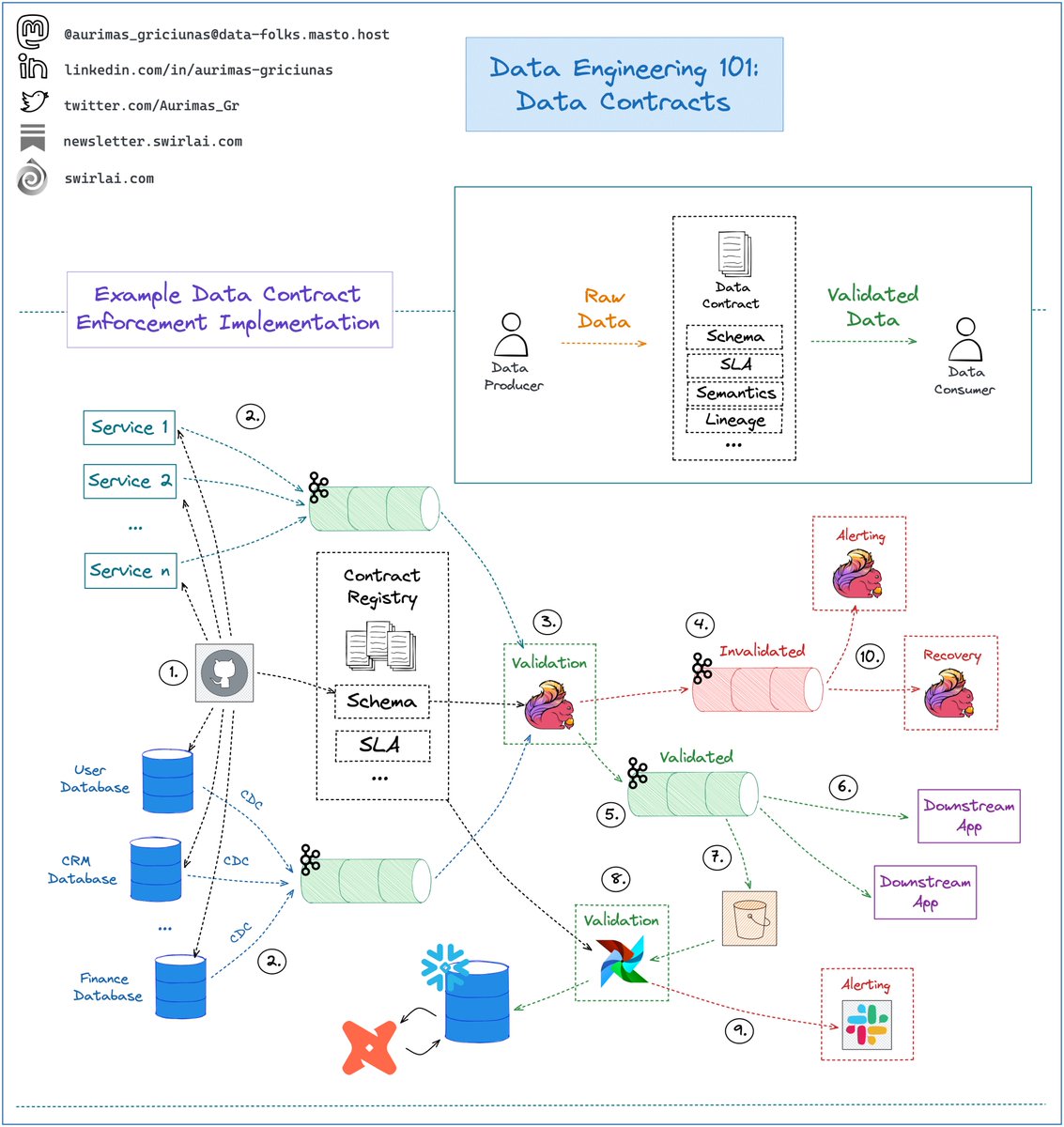
Here is a short refresher on 𝗔𝗖𝗜𝗗 𝗣𝗿𝗼𝗽𝗲𝗿𝘁𝗶𝗲𝘀 𝗼𝗳 𝗗𝗕𝗠𝗦 (𝗗𝗮𝘁𝗮𝗯𝗮𝘀𝗲 𝗠𝗮𝗻𝗮𝗴𝗲𝗺𝗲𝗻𝘁 𝗦𝘆𝘀𝘁𝗲𝗺).
🧵
#Data #DataEngineering #MLOps #MachineLearning #DataScience
🧵
#Data #DataEngineering #MLOps #MachineLearning #DataScience

It could be that you are taking ACID Properties for granted when you are using transactional databases.
If you are interviewing for Data Engineering roles you will be asked to explain what the concept means.
👇
If you are interviewing for Data Engineering roles you will be asked to explain what the concept means.
👇
Let’s take a closer look.
Transaction is a sequence of steps performed on a database as a single logical unit of work.
The ACID database transaction model ensures that a performed transaction is always consistent by ensuring:
👇
Transaction is a sequence of steps performed on a database as a single logical unit of work.
The ACID database transaction model ensures that a performed transaction is always consistent by ensuring:
👇
➡️ 𝗔𝘁𝗼𝗺𝗶𝗰𝗶𝘁𝘆 - Each transaction is either properly carried out or the database reverts back to the state before the transaction started.
➡️ 𝗖𝗼𝗻𝘀𝗶𝘀𝘁𝗲𝗻𝗰𝘆 - The database must be in a consistent state before and after the transaction.
👇
➡️ 𝗖𝗼𝗻𝘀𝗶𝘀𝘁𝗲𝗻𝗰𝘆 - The database must be in a consistent state before and after the transaction.
👇
➡️ 𝗜𝘀𝗼𝗹𝗮𝘁𝗶𝗼𝗻 - Multiple transactions occur independently without interference.
➡️ 𝗗𝘂𝗿𝗮𝗯𝗶𝗹𝗶𝘁𝘆 - Successful transactions are persisted even in the case of system failure.
👇
➡️ 𝗗𝘂𝗿𝗮𝗯𝗶𝗹𝗶𝘁𝘆 - Successful transactions are persisted even in the case of system failure.
👇
ACID guarantees will be ensured by the most Relational DBMSes:
👉 MySQL
👉 PostgreSQL
👉 Microsoft SQL Server
👉 …
👇
👉 MySQL
👉 PostgreSQL
👉 Microsoft SQL Server
👉 …
👇
NoSQL databases usually do not conform to them - they are enforcing another transaction model called BASE. BASE guarantees eventual consistency. Example databases:
👉 Cassandra
👉 MongoDB
👉 …
👇
👉 Cassandra
👉 MongoDB
👉 …
👇
👋 I am Aurimas.
I will help you Level Up in #MLOps, #MachineLearning, #DataEngineering, #DataScience and overall #Data space.
𝗙𝗼𝗹𝗹𝗼𝘄 𝗺𝗲 and hit 🔔
Join a growing community of Data Professionals by subscribing to my 𝗡𝗲𝘄𝘀𝗹𝗲𝘁𝘁𝗲𝗿: newsletter.swirlai.com/p/sai-17-patte…
I will help you Level Up in #MLOps, #MachineLearning, #DataEngineering, #DataScience and overall #Data space.
𝗙𝗼𝗹𝗹𝗼𝘄 𝗺𝗲 and hit 🔔
Join a growing community of Data Professionals by subscribing to my 𝗡𝗲𝘄𝘀𝗹𝗲𝘁𝘁𝗲𝗿: newsletter.swirlai.com/p/sai-17-patte…
• • •
Missing some Tweet in this thread? You can try to
force a refresh










